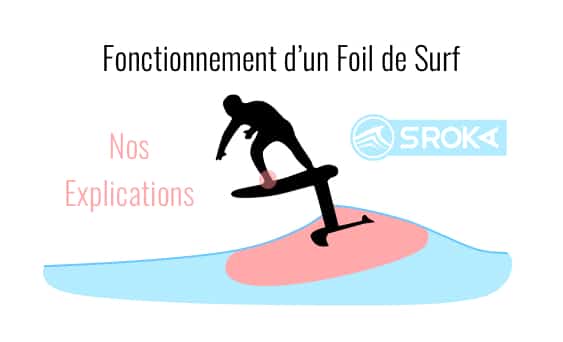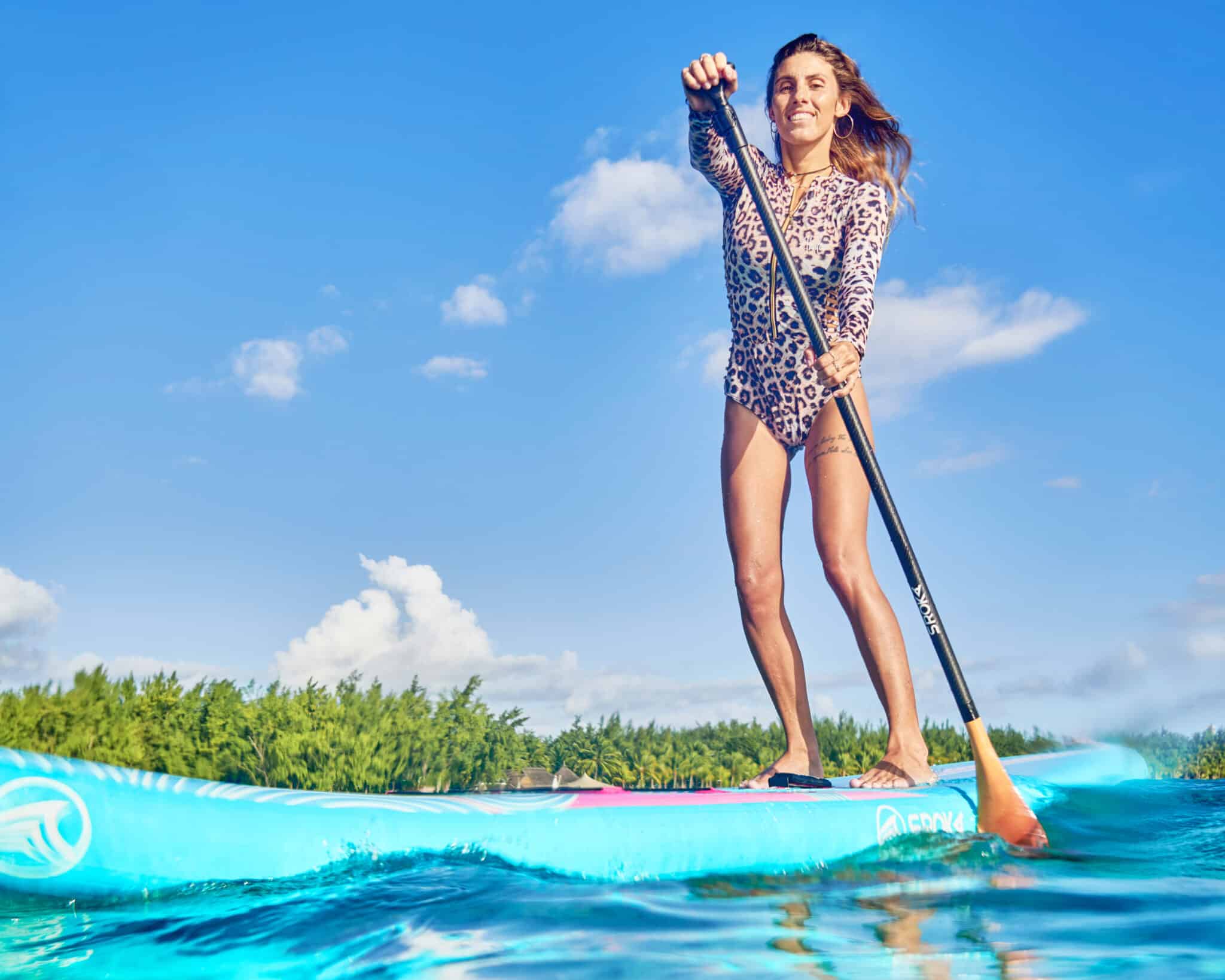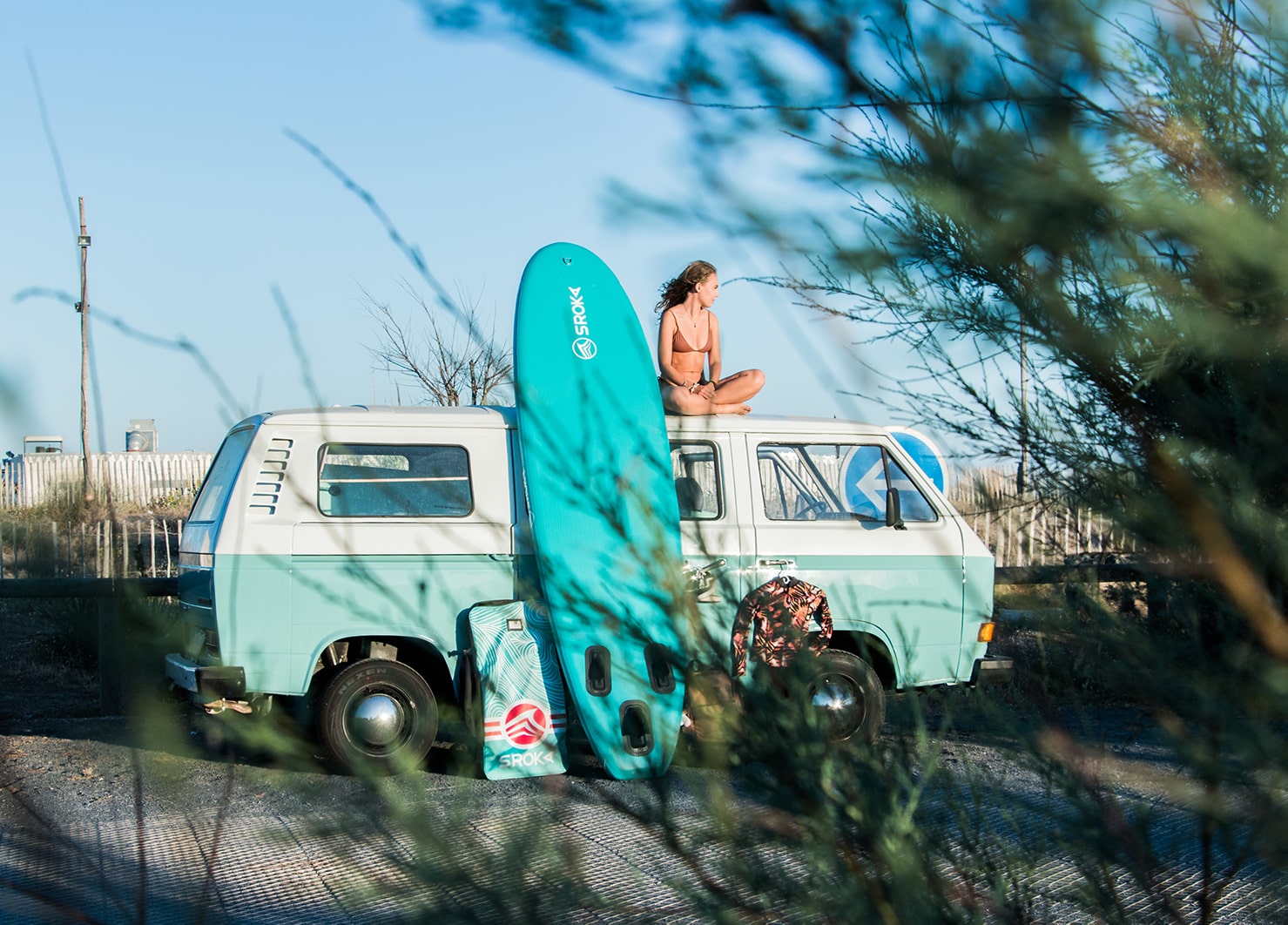Louis-Arnaud surf-foil in Mauritius, equipped with the Fast Flyer 4’6 board and the High Aspect 1190 Lift S-foil Summary Composition of a surf foil Principles …
What is the tide for paddle boarding?
Paddle boarding is an increasingly popular water activity, which involves paddling standing up on a board. To get the most out of this activity, choosing the right tide can be useful! This is because the tides have a significant influence on sailing conditions, wave heights and currents. In this article, we will explore the different types of tides and their characteristics for paddle boarding. We’ll also look at how to choose the right tide for your paddle level and goals, as well as the importance of checking tide forecasts and weather conditions. By choosing the right tide, you will be able to fully enjoy your paddle boarding experience and sail safely.
I - Understanding the tidal phenomenon
As paddle enthusiasts, we know that the tide can be the difference between a successful paddle session and a disappointing one. At Sroka, we are committed to helping you maximize your paddleboarding experience by understanding the characteristics of different tides. Here’s a look at what each type of tide can offer for paddle boarding:
Good to know : Tides are caused by the gravitational interaction between the Earth, the Moon, and the Sun. High and low tides occur twice a day. Rising and falling tides occur twice per tidal cycle. A tidal cycle lasts about 12 hours and 25 minutes.
- High tide occurs when the Moon’s gravity pulls water towards it, creating an increase in sea height. This can create ideal conditions for paddle boarding, as the water is deeper and the waves can be more powerful. However, strong currents can make navigation more difficult, which can be dangerous for beginners.
- Conversely, low tide occurs when the lunar and solar pull on the ocean is at its minimum. Although the waves are gentler and easier to navigate, the shallow water depth can make it difficult to launch the board, often requiring a bit of walking to reach the water.
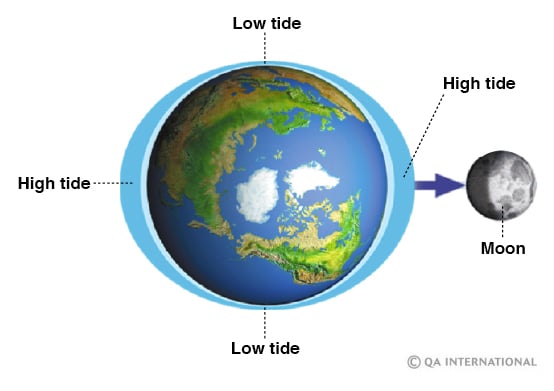
It is also important to note that tides can be influenced by other factors such as winds, atmospheric pressure, and water temperature, which can create variations in sailing conditions. Therefore, it is recommended that you check the tide forecast and weather conditions before planning your next paddle boarding session.
II - The differences between the tides
When paddling, it is essential to take into account the tides for an optimal gliding experience. Not all tides are the same and their intensity depends on the positioning of the moon and sun.
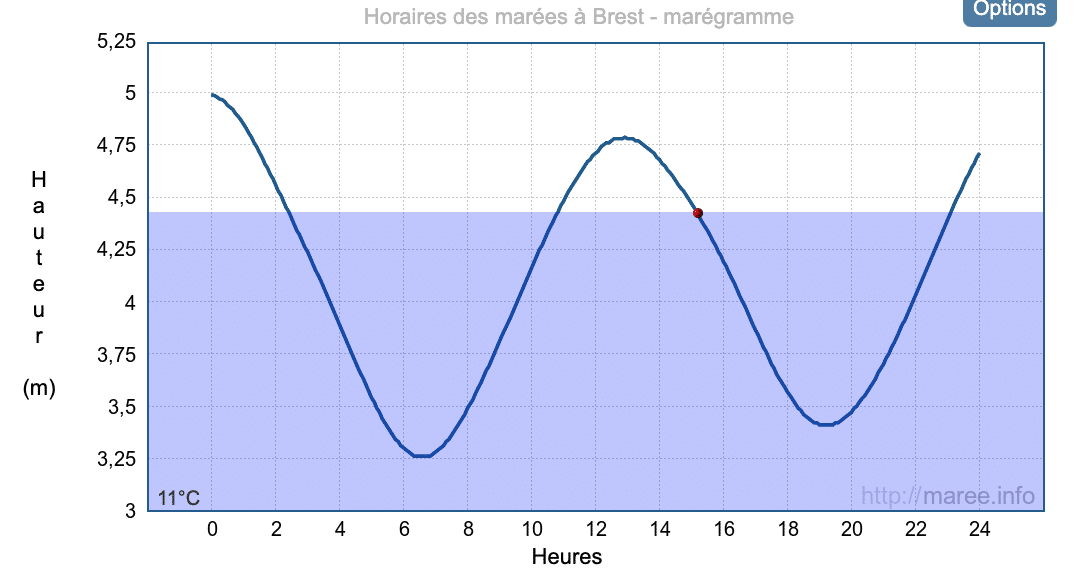
The top of the ripple corresponds to the high tide and vice versa. The time of the tides can be read by the graduated horizontal axis, located below the curve. The red dot is used to locate the tide in real time.
There are three types of tides: low tides, between 30 and 60 coefficients, medium tides, between 61 and 85, and high tides, when the coefficient is greater than 86 to 120. The amount of water displaced by a low tide is not the same as that of a high tide.
The regions sensitive to the tides are mainly Normandy and Brittany, where their influence is very strong, while the further down you go to the south of France, the less important they are.
For paddle enthusiasts, it is important to know that the influence of the tides is felt most in an estuary or at the exit of a river, or in roadsteads such as Brest (Brittany). If you go paddle boarding near the gully in Brest, the place where the opposite bank of the harbour is closest, the concentration of the current is maximum, especially with high tidal coefficients.
III - The influence of the tides on the body of water
Tides have an influence on wave conditions as they change the depth of the water and the relief of the seabed. Depending on the tide, the waves can be more or less hollow, more or less powerful, more or less fast or more or less breaking. The influence of the tides on the waves also depends on the spot, i.e. the place where surfing or paddle boarding.
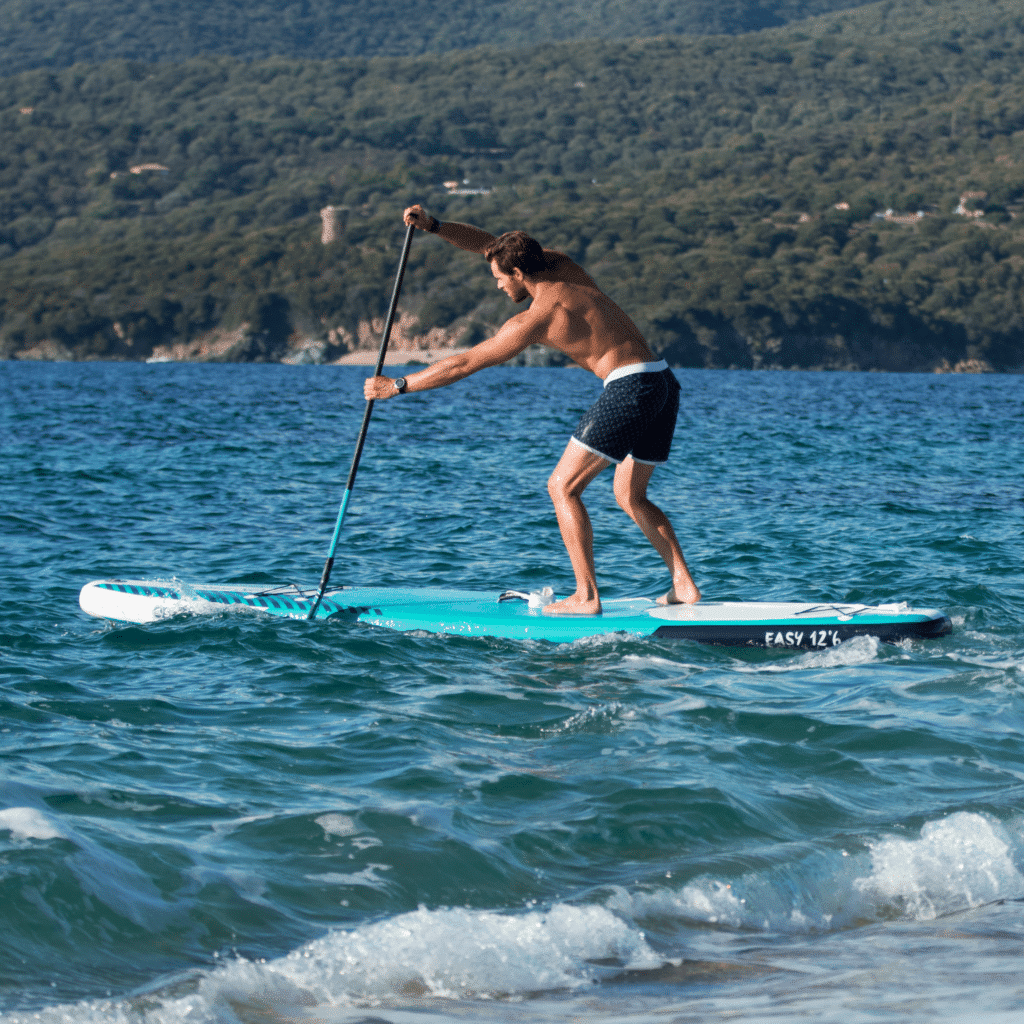
For example, at low tide, the waves can be deeper and more powerful, as they encounter less resistance from the seafloor. But they can also be more dangerous, as they can break on rocks or outcropping reefs. At high tide, the waves can be softer and slower, as they are cushioned by the depth of the water. But they can also be easier to surf, as they offer a wider, more even surface.
There isn’t always a general rule of thumb for choosing the best tide for surfing or paddleboarding. It is necessary to find out about the local conditions of the spot, taking into account the wind, the current, the swell and the tidal coefficient. It is also necessary to respect the swimming and surfing areas, and to bring suitable equipment.
IV - Paddle surfing, paddle walking, paddle yoga: choosing the right tide
Paddle boarding, or stand-up paddleboarding, is a water activity that can be practiced in a variety of ways. Some of the most common include paddle surfing, paddle boarding, and paddle yoga. Each of these practices requires a specific tide for a quality experience. If you are looking for which paddle to choose according to your practice, your level or your size, read our dedicated article.
- Paddle surfing involves surfing the waves with a board and paddle. To practice paddle surfing, you have to choose the tide according to the spot you want to surf, because the waves are not the same at high tide or low tide. You also have to pay attention to the wind and swell, which influence the formation and power of the waves. Swimming and surfing areas must be respected, and we advise you to check local conditions with local practitioners before setting off. Big waves should be avoided, as an inflatable paddle board is not suitable for this kind of conditions.
- Take a paddle board ride is a calmer activity that involves navigating calm waters, such as lakes, rivers, or bays. For this practice, it is advisable to choose a Low tide coefficient. Generally This allows for calmer waters and easier navigation. With low coefficients, you also reduce the risk of being confronted with strong currents, which can be dangerous for a paddle board.
- When it comes to paddle yoga, it is a practice that consists of doing yoga on a paddle board. For this activity, you should choose a calm body of water, without wind or waves. You can practice it on a Inflatable paddle board or on a rigid paddle board. The tide doesn’t matter as long as the body of water is stable and comfortable. You should also avoid areas that are too crowded or too exposed to the wind.
Note that each beach and location has its own specific tide conditions . It is therefore crucial to consult the tide forecast and weather conditions to determine the tide that is best suited to your level and your paddle boarding objectives. Strong winds and big swells can make conditions difficult for even the most experienced.
At Sroka, we are passionate about paddle boarding and we are committed to helping paddlers of all levels enjoy every session safely. Don’t hesitate to contact us for advice on our boards and equipment!
We know that choosing the right tide is essential to ensure a successful and safe paddle boarding experience. We also highlighted the characteristics of the tides for paddleboarding and gave tips on choosing the tide that best suits your level and goals.
Paddle boarding is an exciting activity that can be enjoyed by everyone, from beginner to advanced. However, this requires some knowledge of the tidal conditions and weather to ensure an enjoyable and safe paddleboarding experience.
We encourage all paddlers to take the time to choose the right tide for their level, and to check the weather conditions before each paddle session. At Sroka, we pride ourselves on providing the most reliable and high-quality paddle boarding equipment to help paddlers of all levels achieve their goals and have an unforgettable experience on the water.
If you still have questions about this, or for any other request, please do not hesitate to contact us !
Articles you may be interested in:
Did you know that paddle boarding is a great way to strengthen your body? Not only does this activity allow you to escape on the …
Are you looking for an inflatable paddle board for the summer to sail at sea or in lakes? The inflatable paddle board really has a …
What is Wing Foil? Wing Foil is the latest in board sports. This consists of manipulating a wing held with both hands (“wing”) with a …

